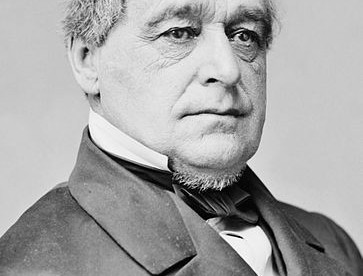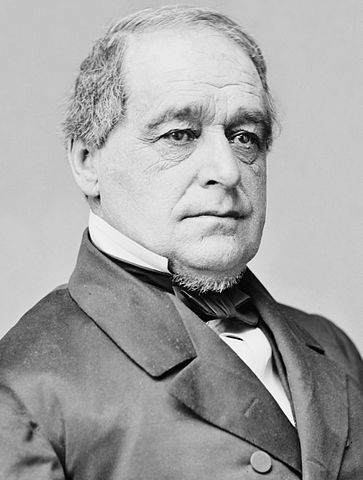Hannibal, Lector


The Vice President of the United States is a thankless job. It has only two actual duties, which is to preside over the Senate (and, cast the tiebreaking vote when needed) and to certify the vote of the Electoral College. But those are mostly ceremonial. In a less formal but more practical sense, the veep has one real duty — to take over if the President can no longer serve. In short, if you’re the Vice President, your job description boils down to two words: don’t die.
And if you were Hannibal Hamlin, above, you accomplished that goal — but it wasn’t due to lack of trying.
Most people have never heard of Hamlin, and that can be forgiven — like most vice presidents, he didn’t do much. However, he was pretty close to becoming the President. On April 14, 1865, John Wilkes booth shot President Abraham Lincoln. Lincoln died the next day, and his Vice President, Andrew Johnson, ascended to the Presidency. As accidental Presidents go, Johnson was one of the most accidental — he had only been Lincoln’s veep for a few weeks. Lincoln had won re-election in the previous November and celebrated his second inauguration on March 4, 1865. But until March 3rd, Johnson wasn’t the vice president. For Lincoln’s first term, that man was Hamlin.
Hamlin’s path to the Vice Presidency came through his home state of Maine. He served three non-consecutive terms as a Senator from the state, resigning the post the third time to serve as Lincoln’s VP. He served briefly as the state’s Governor (see the bonus fact) and spent four years in the House as well. Originally a Democrat, he left the party over its support of slavery, joining the new Republican Party shortly after its formation. Lincoln chose Hamlin as his running mate in order to bring a northerner into the fold, but as the outcome of the Civil War became clearer toward the end of Lincoln’s first term, that became less important. Instead, the Republicans wanted a southerner on his ticket and switched to Johnson.
That transition was awkward; by some reports, Lincoln didn’t want to switch but party leaders were the ones in charge of such decisions. But had fate gone a little bit differently, it wouldn’t have been an issue. That’s because in the summer of 1864, Hamlin, out of a sense of duty, placed himself in harm’s way. There was a very bloody war going on in America at the time, and Hamlin was part of it.
Before the Civil War broke out, Hamlin was a member of the Maine State Guard, “a reserve military force composed of members who held full-time civilian jobs and periodically met for drills, unless called into active service by the governor” per Wikipedia. And on July 7, 1864, per the New York Times, Hamlin’s company was called into service, ordered to fortify Fort McClary on the New Hampshire border. And while Hamlin was, of course, exempt from service, he decided to serve anyway, as a private.
And he wasn’t given a cushy job, either — at least at first. Hamlin’s captain originally assigned the backup to the Commander-in-Chief to guard duty — potentially putting him in danger. (That war didn’t reach the Maine’s southern coast, but an attack on Fort McClary was hardly implausible at the time.) But as already noted, Hamlin survived the war. In fact, his captain helped ensure that; shortly after Hamlin’s original stint as a guard, smarter heads prevailed, and Hamlin was eventually made the company’s cook.
Hamlin returned to Washington to find out that he wasn’t going to be on the ticket that November and he left Lincoln’s administration to return to private life. The call of public service, like the call to war, was something he couldn’t easily ignore, however; a few years after his VP term ended, he again ran for Senate, reclaiming his seat and holding it for another twelve years.
Bonus fact: Hamlin was the 26th Governor of Maine, serving from January 8, 1857 until February 25, 1857 — yes, about seven weeks. Why? Blame the lack of the Seventeenth Amendment and local party politics. Before the 17th Amendment became part of the Constitution, Senators weren’t elected by voters, but by the state legislatures. Hamlin, according to the Senate’s official website, “warned him that refusal to run for governor would end any chance of his being returned to the Senate. As a result, “Hamlin agreed to run for governor, but only if the legislature would send him back to the Senate as soon as possible.” The gubernatorial election took place in September, and Hamlin won easily; as promised, the state legislature returned Hamlin to the Senate shortly after he took office.
From the Archives: Vice President …. Who?: The Vice President whose running mate wasn’t too sure about him.
Related: “Bland Ambition: From Adams to Quayle–The Cranks, Criminals, Tax Cheats, and Golfers Who Made It to Vice President” by Steve Tally. Eight reviews, all but one is a five-star review.
